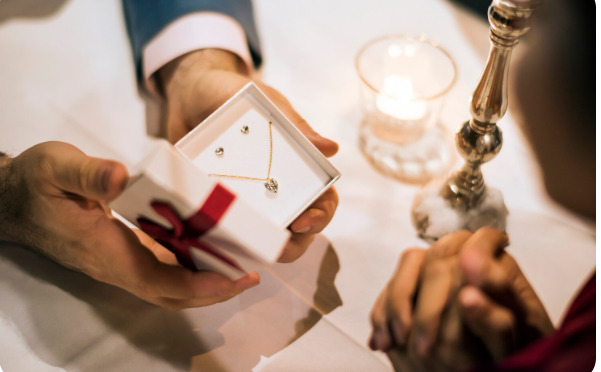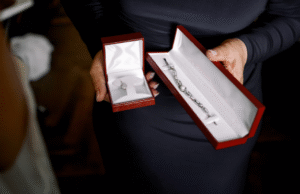
Are you curious about the true value of your jewelry but feel uncertain whether to trust the selling price or the insurance appraisal? Maybe you are planning to sell a piece and want to set a fair price, or you are looking into jewelry insurance to safeguard it against theft, loss, or damage. In both cases, knowing the difference between a jewelry insurance appraisal vs selling price is essential. An appraisal provides the replacement value needed for insurance purposes, while the selling price reflects what a buyer in the current market is willing to pay.
These two figures often differ because they serve separate goals—coverage protection versus market demand. Learning this distinction not only helps you avoid costly mistakes with premiums and coverage limits, but it also ensures you make smarter financial choices when selling or protecting your jewelry. Let’s break down how appraisals work, why selling prices fluctuate, and why both values matter.
A jewelry appraisal is a professional evaluation that determines a piece’s value based on quality, craftsmanship, materials, and current market trends. It serves as a detailed report outlining the jewelry’s specifications, including gemstone size, cut, color, clarity, metal type, weight, and any certifications or lab reports. A qualified appraiser examines each aspect carefully to provide an accurate replacement value, which is essential for insurance coverage.
Appraisals differ from selling prices because they focus on the cost to replace the piece with one of similar quality, rather than what a buyer may pay in the market. They also help with estate planning, resale preparation, and protection against loss, theft, or damage. Having a thorough, up-to-date appraisal ensures your jewelry is properly valued, premiums are accurate, and claims can be processed smoothly when needed.

Getting a jewelry appraisal offers multiple benefits for any jewelry owner. First, it establishes the accurate value of your piece, giving peace of mind and helping determine the correct insurance coverage. An up-to-date appraisal ensures that, in case of loss, theft, or damage, your insurance payout matches the replacement cost. Second, appraisals are valuable when selling jewelry.
They provide a trusted starting point for negotiations and help you secure a fair market price. Third, appraisals verify the authenticity, quality, and materials of your piece, which is especially important for high-value, branded, or antique jewelry. They include detailed documentation of gemstones, metals, and craftsmanship, making it easier to prove provenance and condition. Investing in a professional appraisal protects your financial interests and ensures your jewelry is properly valued for insurance, resale, or estate purposes.
Insurance appraisals target retail replacement value. The figure answers a simple question: if a loss happens, how much money restores the same piece or an equivalent piece at current retail? The number must cover materials, labor, design work, shipping, taxes, and a retailer’s markup. Therefore it often sits above a typical sale price on the open market.
Selling price reflects what a buyer actually pays or offers. In a boutique, the ticket may track brand strength and local demand. In resale channels, offers fall closer to fair market value or liquidation value. Dealers price risk, inventory time, and refinement costs. Consequently, the same ring can carry three different numbers across three venues, none of which match the insurance figure.
Retail replacement requires more than raw materials. It requires speed, sourcing, and service. A proper appraisal accounts for:
Resale buyers rarely fund those layers. They price the piece for trade margins and inventory risk. Hence the gap.

Professionals sort value into clear ladders:
Each ladder solves a different problem. Coverage leans on RRV. Consignment leans on FMV. Estate settlements may lean on FMV or liquidation, based on timelines.
Coverage language matters as much as the appraisal:
Therefore, the right policy plus the right appraisal delivers predictable outcomes. The wrong mix creates shortfalls.
A credible document reads like a blueprint, not a puff piece. It should include:
With this level of detail, insurers, bench jewelers, and clients align fast after a claim.
Coverage limit drives premium. Higher appraised value raises the limit, and thus the cost. A sensible limit matches true replacement cost, not an inflated show number. A reasonable deductible trims premium without creating claim stress. Periodic updates track inflation and any material spikes. Consequently, budgets stay firm and protection stays current.
Different segments set prices with different levers:
Each segment widens or narrows the gap for different reasons. Documentation prevents debate later.
Precise specs keep appraisals defensible and claims smooth.
Jewelry insurance appraisal vs selling price highlights how value can differ depending on purpose. An appraisal sets the replacement cost to ensure proper coverage, while the selling price reflects what buyers are willing to pay in the market. Knowing the distinction protects against underinsurance, inflated premiums, and financial surprises.
Regular appraisals, paired with the right insurance policy, provide security and confidence, whether protecting a cherished heirloom, planning a sale, or managing high-value collections. By keeping documentation accurate and up to date, jewelry owners can safeguard both their investment and peace of mind.
Proper valuation ensures claims are handled smoothly, premiums stay fair, and resale decisions are informed, making jewelry ownership more secure and financially sound.